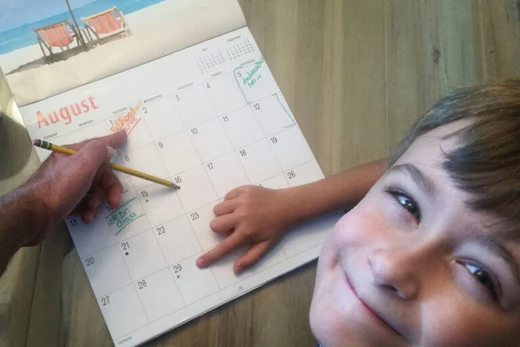Buck Academy’s 12 Month Money Challenge is exactly what you’ve been looking for. This easy to save guide will have you streamlining your savings right into success! We all need a good rainy day fund to cover basic unexpected expenses. This savings plan is a great way for beginners to start saving money for life’s unexpected events. Today, you will learn the 5 W’s of collecting an emergency savings fund.
Who can start this challenge?
This money challenge can be catered to virtually anyone! With an easily achievable goal, and a clear path to savings, by the end of the physical year, you, your children, and your family should expect to see at least over $1,000 saved for a rainy day. If you plan to do this challenge as a family, you can all chip in to the monthly amount, or add to it to increase your end results!
What is the difference between having an emergency fund and a savings account?
While both are great to have, each serve a different purpose. A savings account is considered to be an ‘interest-bearing account’ at a financial institution that can and often will earn interest over time. Savings accounts are a great way to save up money for the fun stuff, college, family trips, a new car, house, or for just about anything else!
While an emergency fund is often referred to as ‘A rainy day fund’. This form of savings main purpose is to help you when life throws unexpected curveballs your way. Whether that be in the form of a busted pipe, appliance replacement, illness, job loss, flat tire, medical care, unexpected bills, or unforeseen expenses. When we say ‘emergency fund’, we are talking strictly about being used for emergency purposes only.
What is a good amount to have in an emergency fund? Well, it’s recommended that you have at least $1,000 saved and set aside, yearly. This amount should cover multiple unexpected expenses or a large one!
When should you start saving, and how often?
You can start saving money anytime! If you start this month, you will see at least $1,050 in your emergency fund by next November. As for how often, you should always have an emergency fund in place. Yearly is ideal, and with this practice, you can see your funds growing year after year.
Where should you put these savings?
Many individuals choose to separate their savings accounts, and emergency funds. Most will put their savings into the bank, and keep their emergency funds in a safe place, in the form of cash. A good way to keep this organized when you are keeping your funds out of your banking institution is to place your money in a designated envelope. From here, if you choose, you can begin to separate your emergency fund by categories of potential usage. For example; $25 in an envelope titled ‘Medical’, $75 in an envelope titled ‘Home’ and so on.
Why do you need an emergency fund?
Why not? When you think about this question, think about how much money you spend on average weekly on fast food, coffee, or other unnecessary expenses. Now, how much can you really afford to put towards this? When life throws the unexpected your way, this emergency fund will be your lifeline. That is why it is so important to have a plan in place.
Bucks Final Commentary
By now, we all know that life is never just simple. Everyday we face new challenges, stressful situations, and unexpected events. It’s how we learn how to manage them that dictates our success. Nobody expects the unexpected, but we can change the outcome by being prepared. This 12 Month Emergency Fund Challenge will make saving for your next rainy day a little brighter.



